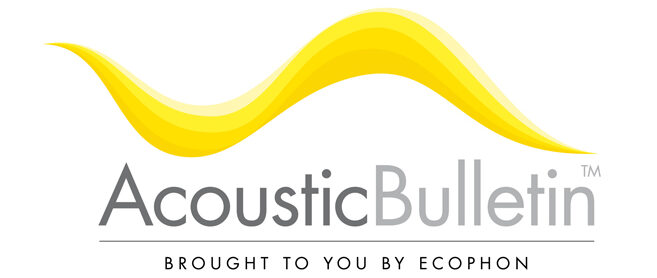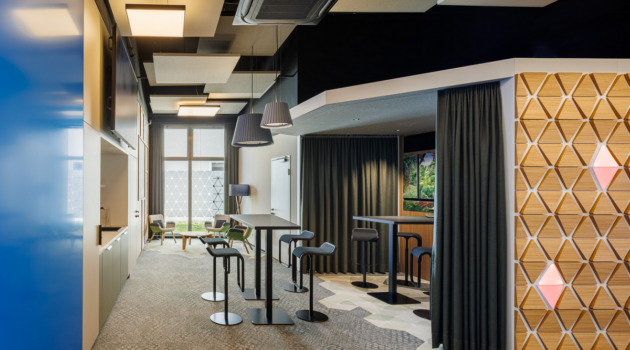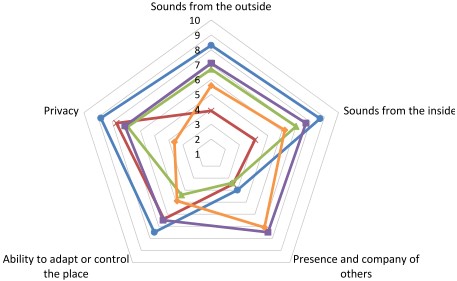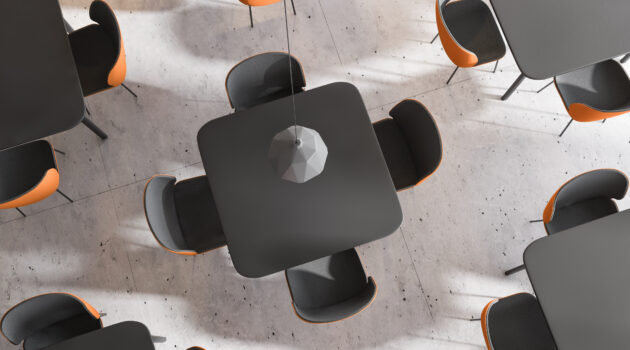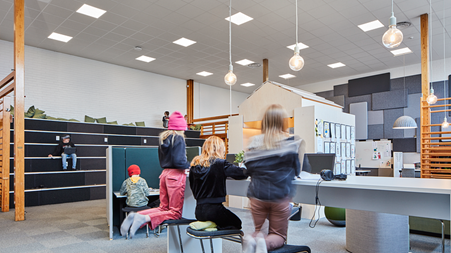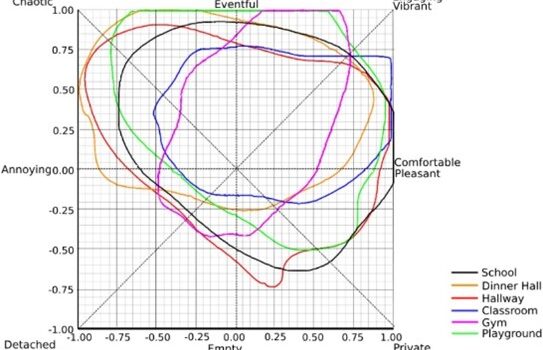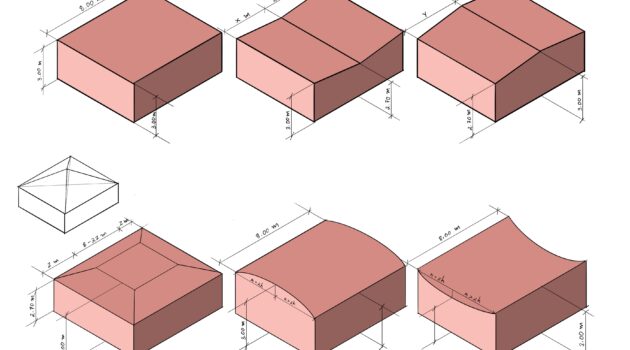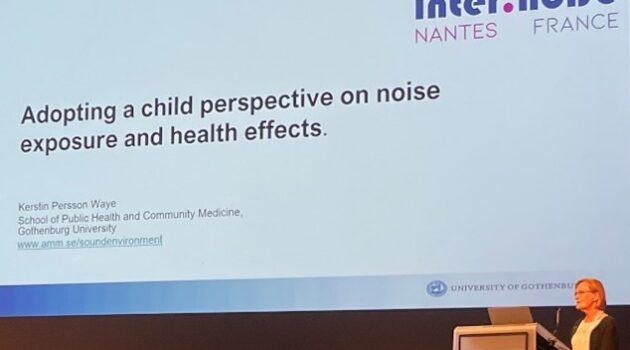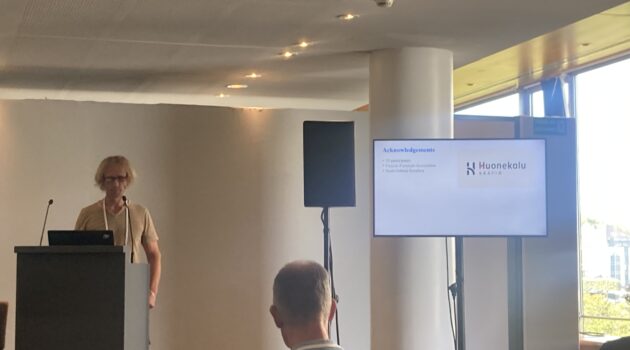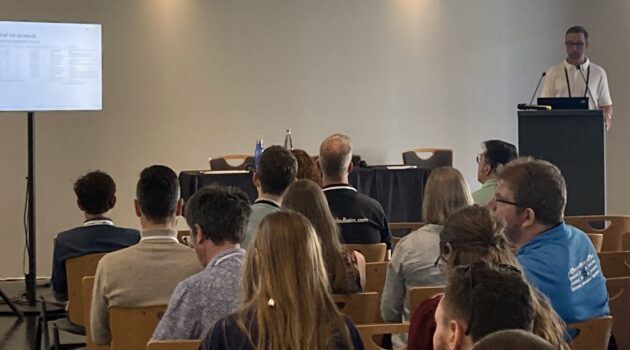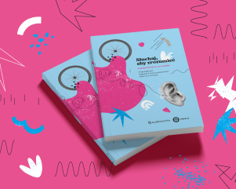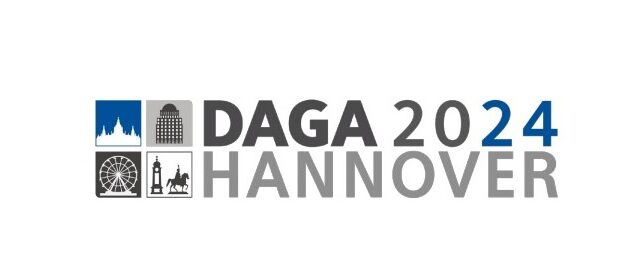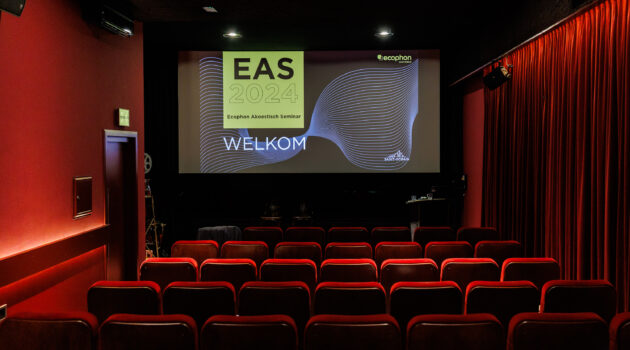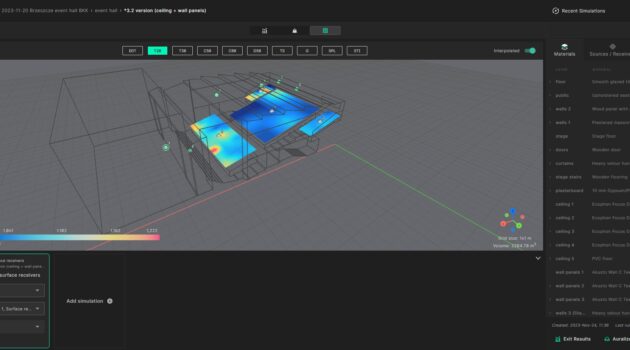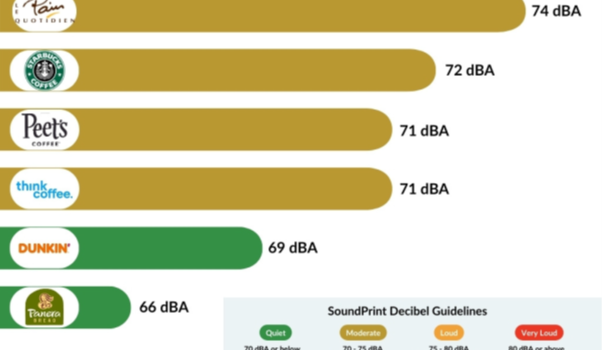More blog posts
How noise affects decision-making
Noise has always been seen as a challenge in workplaces, but its impact on decision-making—especially in experience-based judgments—is not yet fully understood. This article looks at two research studies that explore how noise affects decision-making and the practical implications of their findings. Why room acoustics matter in decision making Efficient decision-making is essential in workplace…
Acoustics, Music and Architecture podcast
How sound and buildings interact! A new BBC Sounds “Start the Week” podcast with sound guru Prof. Trevor Cox, Fiona Smyth author and musician Jess Gillam combine to give a great overview of the history and development of architectural acoustics… Some fascinating acoustic discussions and insights: Echo vs reverberation, distinct echo vs reverberant bloom… Reverberation…
New Aural Diversity toolkit helping designers create more inclusive spaces
Aural Diversity Toolkit Arup and the Aural Diversity Network have developed a toolkit to help designers create spaces and environments that meet the needs of everyone. This toolkit addresses the broader needs of those with aural sensitivities and provides a comprehensive set of recommendations, further research and other relevant aspects to consider to better inform…
Continue Reading New Aural Diversity toolkit helping designers create more inclusive spaces
Acoustic refurbishment of a Dementia Assessment Clinic
Increased need for Dementia Clinics Demographic changes across the globe lead to higher life expectancy in general and we are facing a future where people live longer than before. We have more and more patients of higher age in our healthcare facilities, as well as Dementia Clinic, today than we used to and we need…
Continue Reading Acoustic refurbishment of a Dementia Assessment Clinic
The Impact of Ceiling Profiles on Room Acoustics
Introduction The project aims to explore an underutilized aspect of acoustic optimization: the geometric design of ceilings profiles. While material-based solutions have been extensively studied and implemented, ceiling geometry offers a largely untapped opportunity. Research has consistently shown that ceilings significantly influence room acoustics. However, they are often treated as static, planar elements designed primarily…
Continue Reading The Impact of Ceiling Profiles on Room Acoustics
A Child Perspective on Noise Exposure and Health Effects – Challenges and Strategies
The filmed keynote presentation from Inter-noise2024 this summer is now available. Abstract (plus some relevant slides from the presentation): The presentation discusses the challenges of adopting a child perspective on noise exposure and the health effects due to noise. It takes as a point of departure a child perspective on vulneralility, including exposure, susceptibility to…
Autistic Students’ Sensitivity to Classroom Noise: Implications for Acoustic Design (and the) Impact of classroom noise on autistic students
This study is by Marco Caniato (Free University of Bozen-Bolzano and University of Applied Science HFT of Stuttgart), Federica Bettarello (University of Trieste), Arianna Marzi (Free University of Bozen-Bolzano) and Andrea Gasparella (Free University of Bozen-Bolzano) Inclusion of Additional Support Needs (ASN) sensitivities Students on the autism spectrum often experience heightened sensitivity to environmental sounds, which…
Active noise-cancelling headphones do not improve cognitive performance in office noise environment
In modern open-plan offices, noise from conversations and background activities can significantly impact employees’ productivity and well-being. Active noise-cancelling (ANC) headphones are often employed as a personal solution to reduce distractions and control the acoustic environment. But how effective are these devices in enhancing performance, reducing stress, or improving the overall work experience? This article…
Empirical Method for Predicting Speech Sound Propagation in Offices
ISO 3382-3 describes how to assess sound propagation and speech intelligibility in open-plan offices. At the recent Inter-Noise conference in Nantes, Rainer Machner presented Hongisto and Keränen’s (2013) regression-based model for predicting ISO 3382-3 parameters. By analyzing data from 10 office spaces, he evaluated the model’s performance and gave practical recommendations for its use in…
Continue Reading Empirical Method for Predicting Speech Sound Propagation in Offices
Early Morning Insights: Evaluating Sound in Emergency Department Redesign
Department redesign at Jeroen Bosch Hospital I had the privilege of kicking off the INTER-NOISE 2024 conference with the first presentation on Monday morning at 8:00 AM. Despite the early hour, the room was filled with fellow acoustics enthusiasts eager to delve into the pressing issue of noise in healthcare and Emergency department settings. My…
Continue Reading Early Morning Insights: Evaluating Sound in Emergency Department Redesign
Salvation for civilization – could better listening be part of the solution….
“Listen to understand. Audioeducation for schools” A new book for teachers “Listen to understand. Audioeducation for schools” has been written to support teachers to create better conditions for deeper learning. We are living in a society which has increasing difficulty with attentive listening. Due to this, we talk over each other and argue instead of…
Continue Reading Salvation for civilization – could better listening be part of the solution….
Inter-Noise 2024: Healthcare Acoustics
It was with great pleasure we visited this years Inter-Noise in beautiful Nantes in France. Nantes is especially know for being the birthplace of Jules Verne, master of adventure who was also a poet and one of France’s most prolific authors of all time, with a specific interest in science. Some 1800 acousticians and researchers…
Acoustics in Green Buildings
Acoustics in green buildings, by Hassan Al-Ramadani Over the last twenty years, there has been a remarkable surge in the construction industry’s adoption of green buildings. This has been due to public awareness of adopting sustainability and sustainable practices. Additionally, several studies have proposed that occupants of green buildings have a higher level of productivity…
Irrelevant speech makes perceived workload higher
Irrelevant speech, or background conversations, has been shown to impair cognitive performance and cause physiological stress. Recently published research demonstrated that working during task-irrelevant speech not only increases stress, as measured by heart rate variability, and reduces accuracy but also increases annoyance and perceived workload. Method Thirty participants performed two cognitive tasks (n-back and serial…
Continue Reading Irrelevant speech makes perceived workload higher
Three strategies towards greater sustainability – presentation at DAGA conference
The 50th Annual Congress of the German Acoustical Society (DAGA) was held in Hannover this year. Celebrating decades of innovation and scientific advancement, DAGA 2024 featured presentations dedicated to sustainable practices in acoustic research and technology. This article provides a summary of the presentation by Achim Klein from Ecophon Saint-Gobain on the efficiency, consistency, and…
Continue Reading Three strategies towards greater sustainability – presentation at DAGA conference
After a full 50 years, Slovakia has a new acoustic standard!
Slovakia has a new STN 73 0527 acoustic standard that can finally improve conditions in schools! The new updated STN 73 0527 acoustic standard deals with room acoustics. In schools, universities, and spaces used for cultural, sports, social and public purposes. It aims at ensuring better quality and healthier acoustic conditions. New acoustic standard highlights…
Continue Reading After a full 50 years, Slovakia has a new acoustic standard!
Improving acoustic comfort in swimming pools
Insights from Jeroen Vugts and Pien Schravesande at EAS 2024 Swimming pools, with their lively and dynamic environments, present unique acoustic challenges that are often overlooked. At the recent Ecophon Acoustic Seminar (EAS) in the Netherlands, ir. Jeroen Vugts and Pien Schravesande of LBP Sight presented an insightful discussion on the critical role of acoustics…
Continue Reading Improving acoustic comfort in swimming pools
Tackling acoustic challenges in open-plan offices
Increase in open-plan solutions Open-plan offices have gradually become a preferred model for companies to use, mainly to encourage spontaneous interactions between coworkers, but also because of the aesthetics around a big open room. Further, there is an economic benefit of having as many workstations as possible in fewer square meters. However, these benefits often…
Continue Reading Tackling acoustic challenges in open-plan offices
BNAM 2024: A step forward in acoustic innovation
Baltic-Nordic Acoustic Meeting (BNAM) 2024 is leading the way in acoustic innovation in the Nordic countries. This year, BNAM has been exploring new ways to distinguish itself among major acoustic conferences like Internoise and Forum Acusticum. One of the key strategies has been to offer not just ordinary presentations but also hands-on workshops with software…
Continue Reading BNAM 2024: A step forward in acoustic innovation
Baltic-Nordic Acoustic Meeting 2024, Healthcare
On May 22-24, some 175 delegates from 18 countries gathered together in the beautiful venue at the Finnish-Swedish Cultural Center Hanaholmen. Located at the scenic seafront between Helsinki and Espoo in Finland. This second article will highlight the acoustic meeting presentations regarding Healthcare. Acoustics and Healthcare Acoustic comfort assessment in hospital wards: measuring procedures and…
Continue Reading Baltic-Nordic Acoustic Meeting 2024, Healthcare
Baltic-Nordic Acoustic Meeting 2024
On May 22-24, some 175 delegates from 18 countries gathered together in the beautiful venue at the Finnish-Swedish Cultural Center Hanaholmen. Located at the scenic seafront between Helsinki and Espoo in Finland. Three days of conference targeted even more than before to the people practising acoustics every day. This meant that one of the Baltic-Nordic…
Coffee chain premises noise data gathered by Soundprint
This interesting noise survey can help inform those looking for coffee chain premises which are most conducive for a good conversation. Crowdsourced data has been gathered by the pioneering Soundprint in the USA via their Soundprint App measuring the sound levels when customers visit with the App activated. Rolling data can inform consumer sound preferences…
Continue Reading Coffee chain premises noise data gathered by Soundprint
Find out more on:
